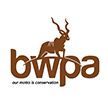Approximately 70 km south of Gaborone, Lobatse is the last stop for cattle farmers trekking their livestock hundreds of kilometres through Kalahari sands for sale to the Botswana Meat Commission. Cattle farming is the country's third-largest revenue earner. Its high quality, free-roaming beef is primarily exported to the United Kingdom and the European Union.
Tours of BMC can be arranged through the General Manager Operations, Tel: +267 533-1292.
The first major tribal settlement in the area was a Bangwaketse village, built in the late 18th century. Later, due to conflict with neighbouring groups, they moved west to their present capital in Kanye. A construction camp and railway siding were built in 1896, servicing Cecil Rhodes' railway line that ran north to Southern Rhodesia (now Zimbabwe). The original railway station no longer stands, but Botswana Railways still runs through the town en route to Gaborone and further north to Francistown.
There are several interesting archaeological remains to be seen around Lobatse. Some are on private land and require permission to visit. These include stonewalling from the Ngwaketse village, situated on Lobatse Estates, and the earlier Seoke stone wall settlement built by the Bangwaketse around 1770.
Just outside the town, on the main Mafikeng road, there are rock paintings of wildebeest – though now quite faded, probably painted by Khoe herders, and possibly dating between 1000 to 1700AD.










